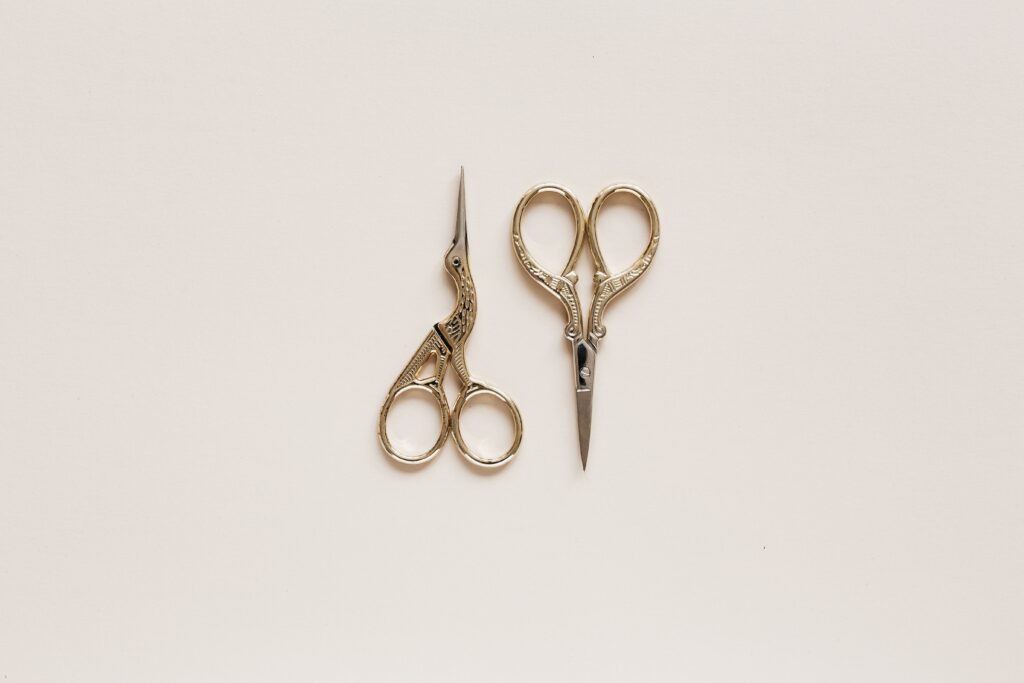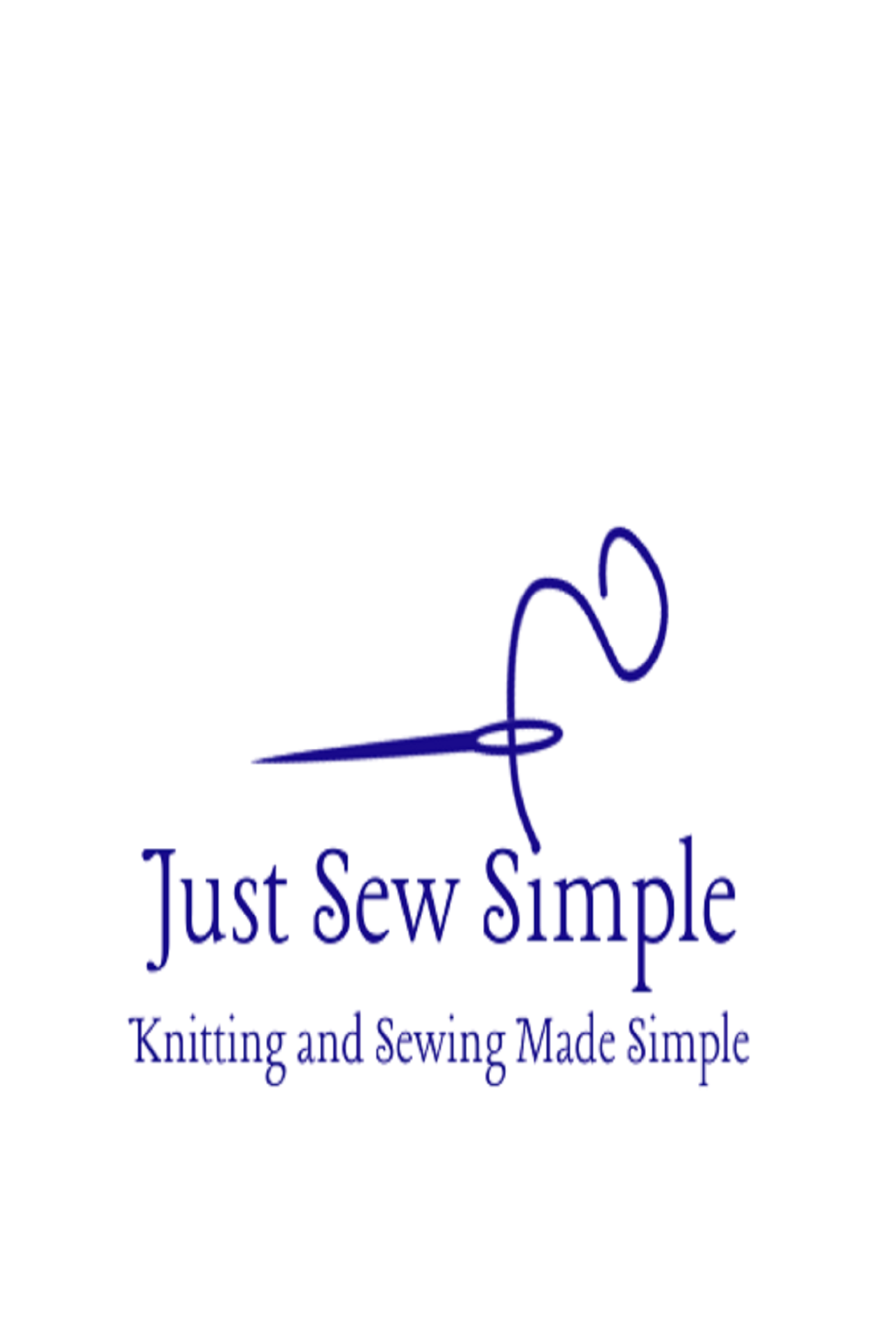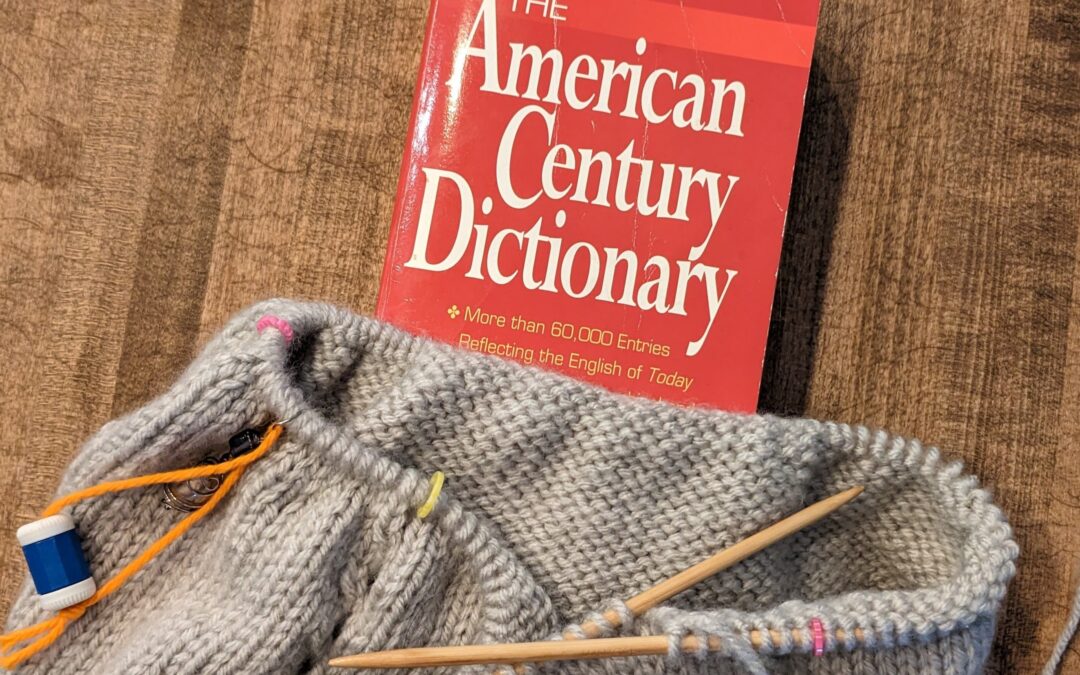Learning to knit can feel as daunting as learning a new language, thanks to the variety of knitting definitions. Knitting patterns are full of unfamiliar acronyms and symbols, stitches go by various names, and seasoned knitters have their own lingo that they use among themselves to describe their craft. This may feel intimidating when you are learning how to knit, but it is all simpler than it seems.
This article will focus on demystifying the vocabulary, slang, and language knitters use with other knitters. To help make the transition into the knitting community as easy as possible, we have collected some essential knitting definitions and jargon to start you on your crafting journey. (Of course, knitting abbreviations are a different beast!)
Any other confusing knitting definitions that we have missed from our list? Let us know, and we will be sure to add them!
Skeins, hanks, balls, and cakes
There are many ways to wind yarn, resulting in different shapes with different terms. Four of the most common types are skeins, hanks, balls, and cakes of yarn.
The term ‘skein’ encompasses quite a few different shapes of wound yarn. This word usually refers to a hank.
Hanks are large loops of yarn twisted onto themselves.
When we think of cats playing with yarn, the quintessential shape we imagine is the simple ‘ball’ of yarn. These are the easiest to produce if you are winding by hand. Just wind the yarn over itself evenly in different directions to create a nicely rounded shape.
Cakes are wound similarly to balls but on an axis. The resulting shape is a squat cylinder that is easy to stack. You can pull the yarn from the center as well as from the outside.
WIP
One of the most common knitting definitions used by the online knitting community is ‘WIP.’ A WIP (pronounced like whip) is a Work In Progress; in other words, it is an ongoing, unfinished project.
Stitch Markers
We use stitch markers to keep track of where we are within our knitting pattern.
For example, if there is a panel of more complicated stitches running down the middle of your design, you can place a stitch marker on either side of the panel to allow you to knit without thinking until you reach the stitch marker.
There are two main types of stitch markers: ring stitch markers and locking stitch markers. Fixed shapes that you can slide on and off the needle are ring stitch markers. Locking stitch markers open up, so you can insert them or remove them from your needle at any time using a mechanism similar to a safety pin. You can also attach locking stitch markers to the fabric of your knitting to identify where you made increases or to keep track of your progress.
Snips

This funny word is simply a word for a small pair of scissors. Snips are usually compact enough to fit in a notions box or bag (see below).
Notions
Notions are the accessories and gadgets that aid you in your knitting. What each knitter carries will vary depending on their needs but may include tape measures, stitch markers, cable needles, or snips.
Tip: because many of the accessories needed for knitting are small and easy to misplace, it may be worth keeping them all in one place, like a small box or bag.
Casting on and binding off
Casting on refers to the act of knitting the first stitches of your project onto your needles. “I cast on a project” can generally mean, “I started a project.”

Binding off means knitting the final stitches of your project while simultaneously removing them from your needles.
There are many different techniques available to cast on and bind off, which provide a range of edges, from sturdy and inelastic to stretchy, elastic borders.
Frogging or Ripping out
You frog or rip out your knitting when you need to unravel your work.
Maybe you realize that the sweater you are knitting is too small or that you made a mistake that you need to go back and fix. Luckily, for most knitting projects, you can easily remedy this by slipping the stitches from your needles and pulling on the yarn to ‘frog’ or unravel the stitches back to the necessary point.
As far as knitting definitions go, ‘frogging’ is one of our favorites.
Pooling
When knitting with yarn comprising multiple colors, the colors might start to ‘pool’ or group together within different sections of your knitted fabric. To avoid this random grouping of colors, you can alternate between balls of yarn in a larger project. Or, just embrace the fun of working with multi-colored yarn, and let those colors pool!
DPNs

DPN stands for double-pointed needles. These are the preferred type of needles for knitting small circumference items, like socks, sleeves, and hats.
Destash
Many knitters like to collect yarn – it is hard to resist! But knitters may opt to donate or sell some of their horde as their tastes change over time or they run out of storage options. We call this a destash.
There are many more knitting definitions that you will discover on your knitting journey and as you learn to read a knitting pattern. Please let us know if there are any others that we should include on our list. What terms do you often use that we missed?

